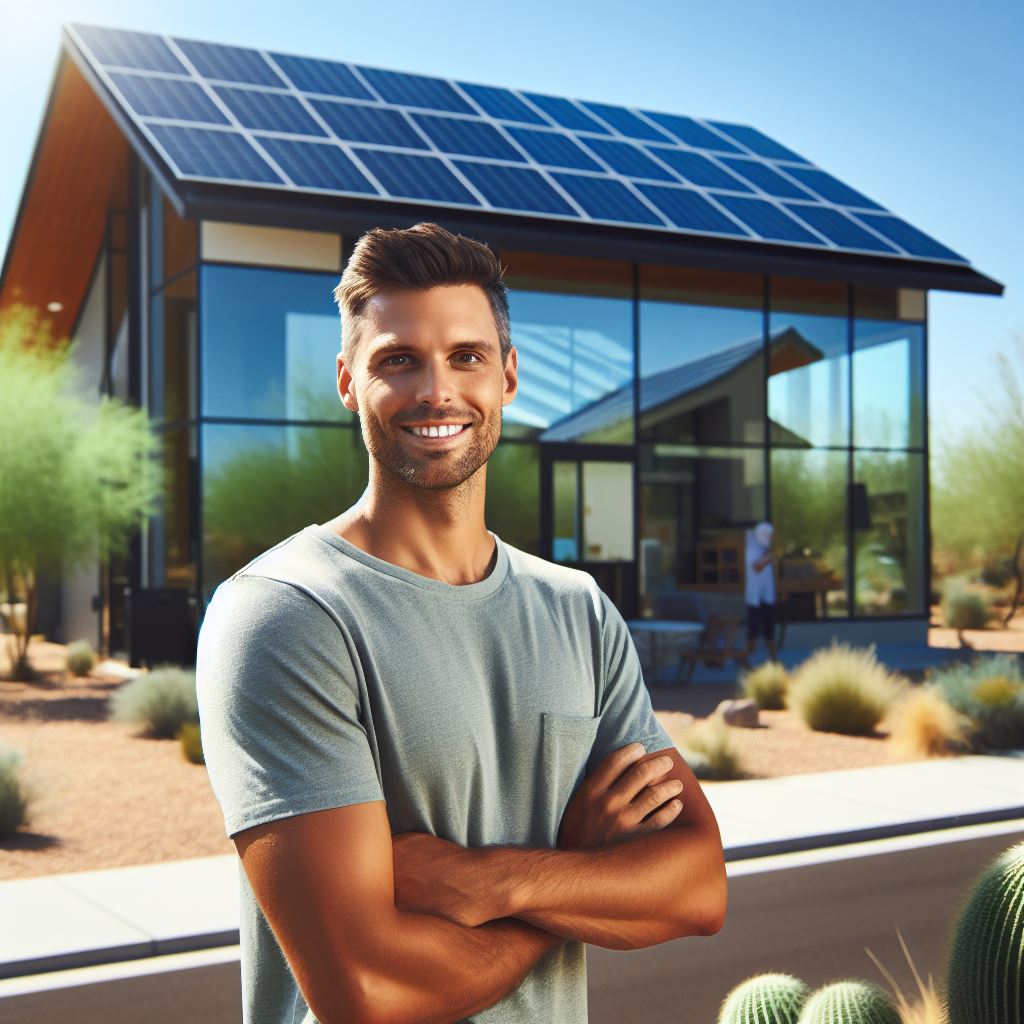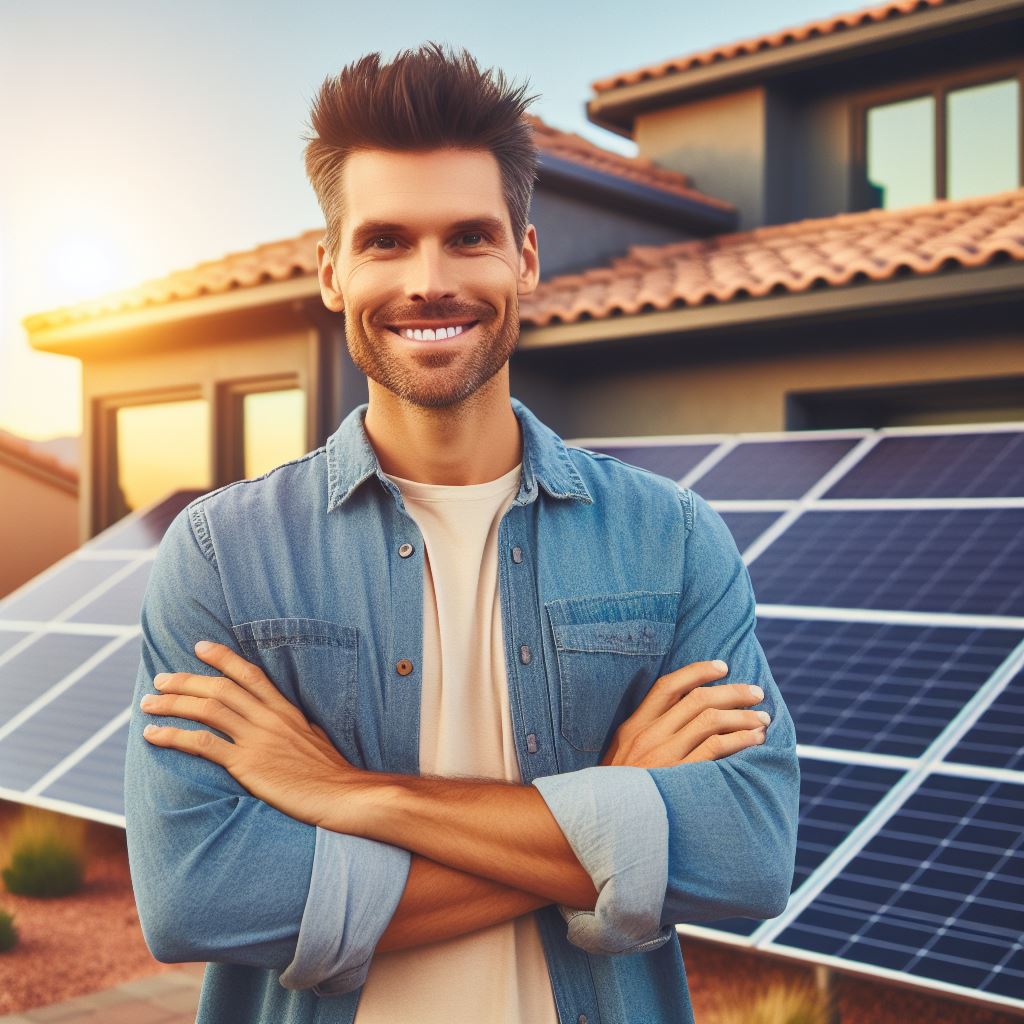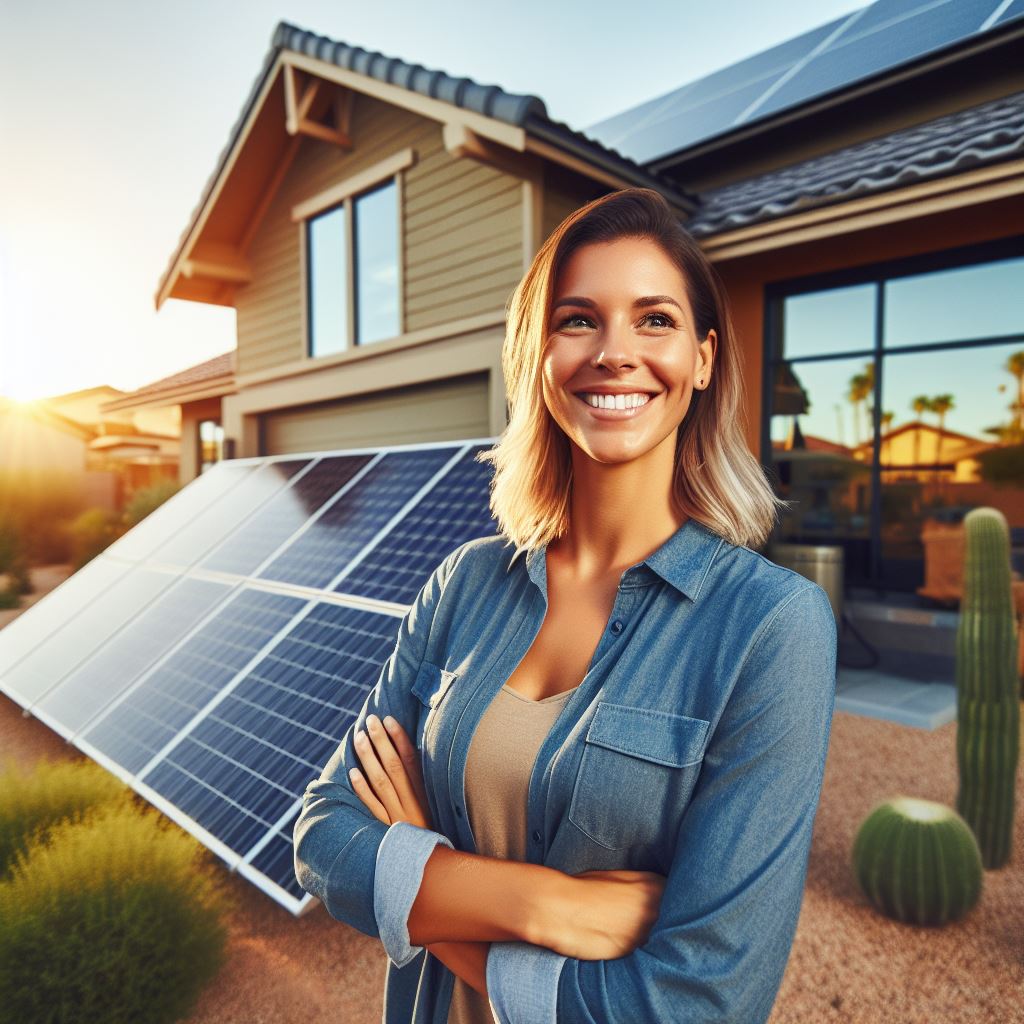Introduction
Eco-smart homes are houses that are designed to have a minimal impact on the environment.
These homes employ energy-efficient technologies and sustainable materials to reduce energy consumption and carbon footprint.
In recent years, there has been a growing interest in eco-smart homes in New England.
People are becoming more aware of the environmental challenges we face and are seeking sustainable housing options.
The blog post aims to shed light on the advantages and features of eco-smart homes in New England.
It will delve into the various aspects that make these homes eco-friendly, such as solar panels, rainwater harvesting systems, and efficient insulation.
Furthermore, the blog post will also discuss how living in an eco-smart home can contribute to a healthier lifestyle.
The use of non-toxic materials and improved indoor air quality in these homes can positively impact the well-being of residents.
In addition, the economic benefits of eco-smart homes will be highlighted. These homes can significantly reduce energy bills and maintenance costs in the long run.
Overall, this blog post aims to educate readers about the advantages of eco-smart homes in New England and encourage them to consider sustainable housing options.
By choosing eco-smart homes, individuals can play a part in mitigating climate change and creating a greener future for the region.
Benefits of Eco-Smart Homes
Energy efficiency
Energy efficiency is one of the major advantages of eco-smart homes.
These homes are specifically designed to minimize energy use, resulting in various benefits for both homeowners and the environment.
Firstly, eco-smart homes prioritize reduced energy consumption.
They incorporate energy-saving technologies and materials that minimize the amount of energy needed to power and operate the home.
This means less energy is wasted, leading to lower overall energy bills for homeowners.
In addition to lower utility bills, eco-smart homes have a positive impact on the environment.
By reducing energy consumption, these homes contribute to the reduction of greenhouse gas emissions.
This helps combat climate change and promotes a sustainable future.
Improved indoor air quality
Eco-smart homes also prioritize improved indoor air quality.
Traditional homes often experience issues with poor air circulation and the presence of harmful toxins.
However, eco-smart homes address these concerns effectively.
One-way eco-smart homes achieve improved air quality is through the use of non-toxic building materials.
These materials are free from harmful chemicals, such as volatile organic compounds (VOCs), which can negatively impact human health.
With non-toxic materials, occupants can enjoy cleaner and healthier indoor air. Eco-smart homes also employ enhanced ventilation systems.
These systems ensure a constant flow of fresh air throughout the home, reducing the presence of pollutants and allergens.
Proper ventilation contributes to a healthier living environment for occupants, especially those with respiratory conditions.
Overall, the improved indoor air quality in eco-smart homes offers numerous health benefits for occupants.
Cleaner air reduces the risk of respiratory issues, allergies, and other health problems commonly associated with poor indoor air quality.
Water conservation
Water conservation is another notable advantage of eco-smart homes.
These homes implement various strategies and technologies to minimize water usage and reduce the strain on water resources.
Eco-smart homes feature efficient plumbing fixtures designed to reduce water wastage.
Low-flow toilets, faucets, and showers ensure that less water is used during everyday activities.
This not only helps conserve water but also lowers water bills for homeowners.
In addition to efficient plumbing fixtures, eco-smart homes may include rainwater harvesting systems.
These systems collect rainfall and store it for later use, such as watering gardens and flushing toilets.
By utilizing rainwater, homeowners can further reduce their reliance on municipal water supplies.
Overall, eco-smart homes prioritize water conservation by promoting thoughtful water usage and incorporating technologies that reduce water wastage.
In essence, eco-smart homes offer numerous benefits, including energy efficiency, improved indoor air quality, and water conservation.
These homes not only provide financial advantages, such as reduced utility bills, but also contribute to a healthier environment and better quality of life for occupants.
Read: Sustainable Urban Spaces in Chicago
Design Features of Eco-Smart Homes
Eco-smart homes in New England incorporate various design features to maximize energy efficiency, reduce environmental impact, and enhance homeowners’ comfort.
These features include:
Passive solar design
Passive solar design is a fundamental aspect of eco-smart homes.
It harnesses the power of the sun to naturally heat and light the home, reducing the need for artificial heating and lighting.
- Orientation of the house: The orientation of the house is carefully planned to maximize solar gain during the winter and minimize heat gain during the summer.
This involves positioning the longest sides of the house facing south, where they can receive the most sunlight. - Strategic placement of windows: Windows are strategically located to allow for maximum sunlight penetration at specific times of the day.
This optimizes natural lighting, reduces the need for artificial lighting, and helps regulate the temperature inside the home. - Utilization of natural light for heating and lighting: Eco-smart homes maximize the use of natural light, reducing the reliance on artificial lighting.
Sunlight is harnessed to provide warmth, and well-designed windows and skylights allow ample natural light to flow into the living spaces.
High-performance insulation
High-performance insulation is critical for eco-smart homes in New England, as it helps minimize heat loss and gain, reduces energy consumption, and enhances comfort.
- Types of insulation materials used: Eco-smart homes use insulation materials such as cellulose, fiberglass, and spray foam insulation.
These materials have high R-values, which measure their ability to resist heat flow, ensuring optimal thermal insulation. - Proper installation techniques: The insulation is installed with meticulous attention to detail, ensuring airtightness and eliminating gaps.
Proper installation techniques prevent heat loss and minimize the infiltration of cold air, improving energy efficiency. - Minimizing thermal bridging: Eco-smart homes address thermal bridging, which occurs when materials with high thermal conductivity create pathways for heat to escape or enter the home.
Thermal bridging is minimized through the use of continuous insulation and the elimination of thermal bridges like metal studs.
Renewable energy sources
Eco-smart homes utilize renewable energy sources to reduce dependence on fossil fuels, decrease greenhouse gas emissions, and promote sustainability.
- Solar panels: Solar panels capture sunlight and convert it into electricity, which can power various appliances and systems in the home.
They are typically installed on the roof to maximize sun exposure. - Wind turbines: For homes located in areas with consistent wind patterns, wind turbines can generate clean and renewable energy.
The kinetic energy from the wind is converted into electricity to supplement the home’s power needs. - Geothermal heating and cooling systems: Geothermal systems harness the stable temperature of the earth to provide heating and cooling for the home.
Pipes buried underground extract heat during the winter and dissipate heat during the summer, reducing the reliance on traditional heating and cooling methods.
In fact, eco-smart homes in New England incorporate passive solar design, high-performance insulation, and renewable energy sources to create energy-efficient, environmentally friendly, and comfortable living spaces.
These design features are essential for reducing energy consumption, minimizing environmental impact, and promoting sustainable living.
Read: Washington State’s Green Investment Guide

Green Building Certifications
LEED (Leadership in Energy and Environmental Design)
- Overview of the certification: LEED is a renowned green building certification program that promotes sustainable practices in constructing and operating buildings.
- Criteria for obtaining LEED certification: LEED certification requires compliance with specific requirements related to energy efficiency, water efficiency, sustainable materials, and indoor environmental quality.
- Benefits of a LEED-certified eco-smart home: A LEED-certified eco-smart home provides numerous advantages, including reduced energy consumption, improved indoor air quality, and higher resale value.
ENERGY STAR
- Role of ENERGY STAR in evaluating energy efficiency: ENERGY STAR is a program that identifies and labels energy-efficient products and buildings, helping consumers make sustainable choices.
- Requirements for ENERGY STAR certification: ENERGY STAR certification requires meeting specific energy performance standards set by the Environmental Protection Agency (EPA).
- Advantages of owning an ENERGY STAR eco-smart home: Owning an ENERGY STAR eco-smart home ensures reduced energy costs, enhanced comfort, and a positive environmental impact.
Read: Oregon’s Path to Sustainable Property
Challenges and Considerations
When considering eco-smart homes in New England, there are several challenges and considerations to keep in mind.
One of the primary challenges is the higher upfront costs associated with investing in eco-smart features.
Higher upfront costs
Implementing eco-smart technologies and systems, such as solar panels and energy-efficient appliances, often requires a significant initial investment.
However, homeowners should also consider the long-term financial benefits of these features.
By reducing energy consumption and utility costs, eco-smart homes can provide significant savings over time.
Limited availability and options
Another consideration is the limited availability and options for eco-smart homes.
Builders and developers specializing in eco-friendly construction may be relatively scarce, making it more challenging to find the right property.
Additionally, homeowners may have limited customization choices when it comes to eco-smart features, as certain designs and materials are optimized for energy efficiency.
Maintenance and upkeep
Maintenance and upkeep are essential aspects of owning an eco-smart home.
Regular system check-ups and inspections are necessary to ensure that all eco-smart features are working optimally.
This includes monitoring and maintaining renewable energy sources, such as solar panels or geothermal systems, to guarantee their efficiency and longevity.
Overall, while there are challenges and considerations when it comes to eco-smart homes in New England, they offer numerous benefits that make them worth exploring.
Despite the higher upfront costs, the long-term financial savings, environmental impact, and potential for increased property value make eco-smart homes an appealing option for homeowners committed to sustainability.
Read: Portland Real Estate: Eco-Friendly Investing
Conclusion
Recap of the benefits and features of eco-smart homes
Eco-smart homes represent a paradigm shift in residential living, embodying a fusion of cutting-edge technology and environmentally conscious design principles.
These homes boast a plethora of benefits, ranging from heightened energy efficiency to enhanced water conservation and superior indoor air quality.
By leveraging state-of-the-art innovations such as smart thermostats, solar panels, energy-efficient appliances, and advanced insulation techniques, eco-smart homes not only minimize their ecological footprint but also offer unparalleled comfort and cost savings to their inhabitants.
With features like rainwater harvesting systems, low-flow plumbing fixtures, and sustainable building materials, these homes are at the forefront of sustainable living, setting a new standard for residential architecture in the 21st century.
Importance of eco-smart homes in New England
In the context of New England’s climate, characterized by harsh winters and fluctuating temperatures, the significance of eco-smart homes cannot be overstated.
By harnessing renewable energy sources like solar power and geothermal heating, these homes mitigate the impact of extreme weather conditions, reducing reliance on traditional heating and cooling systems that contribute to carbon emissions.
Furthermore, in a region where energy costs are notoriously high, the economic benefits of eco-smart homes are particularly compelling, offering residents substantial savings on utility bills while simultaneously bolstering the region’s energy resilience and independence.
Encouragement for individuals to consider eco-smart homes for a sustainable future
As we stand at the precipice of a global environmental crisis, the imperative to adopt eco-smart homes for a sustainable future has never been more urgent.
By embracing these innovative housing solutions, individuals not only make a tangible contribution to mitigating climate change but also reap the rewards of healthier, more efficient, and more affordable living spaces.
Therefore, I implore each and every one of us to consider the profound impact that eco-smart homes can have on our lives and our planet, and to take proactive steps towards building a greener, more sustainable future for generations to come.




